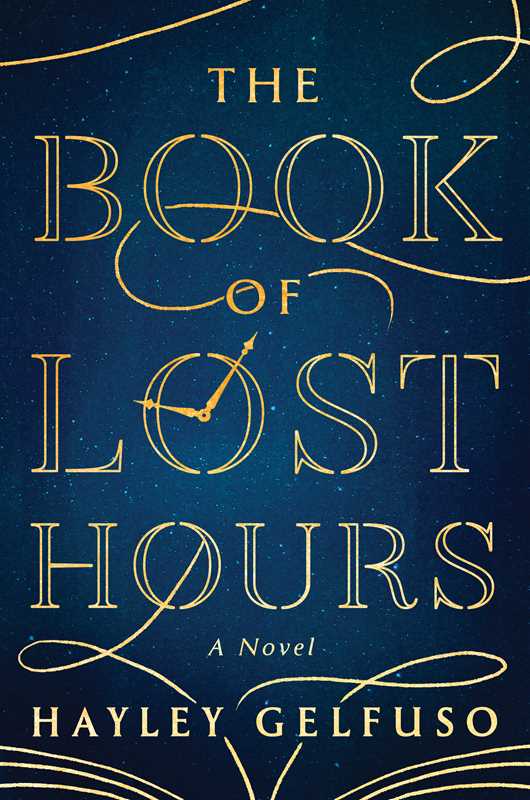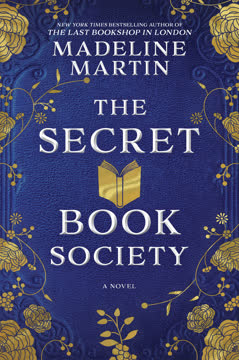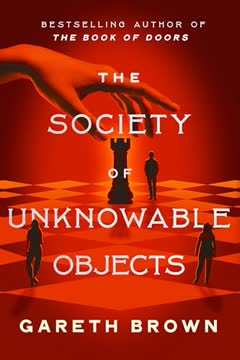Plot Summary
Night of Broken Glass
In 1938 Nuremberg, young Lisavet Levy's life is upended when her Jewish clockmaker father, Ezekiel, senses the coming Nazi storm. He tells her stories of timekeepers and a magical watch, but reality crashes in as Kristallnacht erupts outside. To save Lisavet, Ezekiel uses the family's secret: a watch that opens a door to the "time space," a mysterious library between moments. He promises to return for her and her brother, but the door closes, leaving Lisavet alone in a world of shadows and memories, her childhood and family violently torn away.
The Library Between Worlds
Alone in the time space, Lisavet discovers a vast, surreal library filled with the memories of the dead. She cannot leave, nor does she hunger or age as before. She meets Azrael, a spectral guide, and learns that timekeepers—agents from many nations—enter this place to store or destroy memories, shaping history itself. Lisavet, neither dead nor a timekeeper, is an anomaly. She begins to explore, haunted by her father's stories and the echoing silence of abandonment, determined to find meaning and perhaps a way home.
Lost and Found Memories
As years pass, Lisavet grows up wandering the time space, learning to "time walk" through memories and witnessing the beauty and horror of history. She befriends Azrael and becomes obsessed with saving memories targeted for destruction by timekeepers, especially those of her people. She salvages fragments, hiding them in a blue book. The time space becomes both her prison and her purpose, as she realizes that erasing memories is erasing lives, and that the past is constantly rewritten by those in power.
The Watch and the Wound
In the aftermath of World War II, American timekeeper Ernest Duquesne discovers Lisavet's existence. Tasked with stopping her interference, he instead becomes fascinated by her. Their encounters grow from wary to intimate, culminating in a violent confrontation with a Russian timekeeper. Ernest is shot protecting Lisavet, and she must use her knowledge of memories to save his life, pulling him into a war hospital memory to treat his wound. Their bond deepens, and Ernest learns the truth of Lisavet's isolation and her mission to preserve what others would erase.
Shadows of the Past
Ernest and Lisavet fall in love, sharing stolen moments across centuries and memories. But Ernest's superiors grow suspicious, and he is forced to choose between duty and love. Lisavet, fearing for his safety, erases herself from his memory, sacrificing their happiness to protect him. Meanwhile, the time space grows unstable as more memories are altered or destroyed, and Lisavet's blue book becomes a symbol of resistance for timekeepers who question the morality of rewriting history.
The Girl Who Remembers
In 1965 Boston, orphaned teenager Amelia Duquesne, Ernest's niece, is drawn into the world of timekeepers after her uncle's mysterious death. She receives his watch and, against warnings, winds it—falling into the time space herself. There, she encounters echoes of Lisavet's story and the rebellion brewing among timekeepers. Amelia's unique ability to remember what others forget makes her both a target and a key to the future, as she is manipulated by Moira Donnelly, the enigmatic new director of the Temporal Reconnaissance Program.
The Rebellion Grows
As Cold War tensions rise, timekeepers from different nations—Americans, Russians, and others—form a secret rebellion to resist the erasure of inconvenient memories. Anton Stepanov, a young Russian timekeeper, and James Gravel, an independent American, become Amelia's unlikely allies. The blue book of lost memories, once Lisavet's, is now the most sought-after artifact in the time space, holding the secrets to making new watches and the truth about the past. Loyalties are tested as the line between protector and manipulator blurs.
Love in the Time Space
Despite the dangers, Lisavet and Ernest's love story continues to echo through the time space and the memories of those they touched. Their relationship becomes a legend among the rebels, a symbol of hope and the possibility of change. But their happiness is always threatened by the demands of the timekeepers' war and the knowledge that every memory can be rewritten or erased. Their sacrifices ripple outward, shaping the destinies of those who come after.
Betrayal and Erasure
Moira Donnelly, revealed as Lisavet living under a new identity, is forced by her superior Jack Dillinger to erase memories and betray her own ideals to protect Amelia. Jack's manipulations and Moira's own guilt lead to a series of betrayals, including the murder of Anton's father and the erasure of countless lives. The chasm in the time space widens, a physical manifestation of the damage done by tampering with memory. Moira's struggle to reconcile her past with her present threatens to destroy everything she loves.
The Book of Lost Hours
Amelia and Anton, guided by Azrael, finally unlock the secrets of Lisavet's blue book. They witness the intertwined stories of Lisavet, Ernest, and the rebellion, understanding at last the true cost of erasure and the power of remembering. The book becomes a map of lost possibilities, a testament to the lives and loves that history tried to forget. As the chasm threatens to consume the time space, the characters must decide what is worth saving and what must be let go.
The Chasm Opens
With the time space collapsing, Lisavet and Ernest reunite, but their happiness is short-lived. Ernest devises a plan to seal off the time space forever, preventing further interference in history but trapping himself inside. Lisavet, unwilling to lose him again, takes the burden upon herself. She alters the memory of the first timekeeper, unraveling the entire system and freeing the memories trapped within. The chasm swallows the time space, and the world is remade.
Daughter of Two Times
Amelia finds herself in a world where the time space never existed, her family whole and history unaltered by timekeepers. She alone remembers both timelines, carrying the legacy of her mother's sacrifice and the lessons of the past. The blue forget-me-nots in her mother's garden are a quiet reminder of what was lost and what was saved. Amelia's friendship with Anton, now just a Russian exchange student, hints at the possibility of new beginnings and the enduring power of memory.
The Final Sacrifice
In the final moments, Lisavet embraces her fate, merging with the stars and becoming one with the collective memory of humanity. Her story, once erased and rewritten, now lives on in every act of remembrance and every fight against forgetting. The time space is gone, but the lessons remain: that every life, every memory, matters, and that the past is not just what happened, but what we choose to remember.
A New History Written
The world moves forward, free from the manipulations of timekeepers. History is no longer a battleground for power, but a tapestry of countless stories, each with its own truth. The characters find peace in their new lives, shaped by the echoes of what came before. The blue book of lost hours is gone, but its spirit endures in the resilience of those who refuse to let the past be forgotten.
Memory, Time, and Forgiveness
As the characters adjust to their new reality, they grapple with the memories of what was lost and what was gained. Forgiveness becomes possible—not just for others, but for themselves. The scars of erasure and betrayal fade, replaced by the hope that comes from understanding and acceptance. The story ends not with a bang, but with a quiet promise: that as long as someone remembers, nothing is truly lost.
The Stars Remain
In the end, Lisavet's spirit lingers among the stars, a guardian of memory and a symbol of the enduring power of love. The time space is gone, but the stars remain, each one a story waiting to be told. The world is forever changed, but the lessons of the past shine on, lighting the way for those who come after.
Characters
Lisavet Levy / Moira Donnelly
Lisavet is the heart of the novel—a Jewish girl thrust into the time space to escape Nazi Germany, she grows from a frightened child into a fierce protector of memory. Her years in the time space teach her empathy, resilience, and the cost of erasure. As Moira Donnelly, she becomes both victim and perpetrator, forced to erase memories to protect her daughter, Amelia. Her love for Ernest is both her salvation and her undoing, and her ultimate sacrifice—erasing the first timekeeper and herself—restores the world's balance. Lisavet embodies the struggle between remembering and forgetting, and her journey is one of forgiveness, self-acceptance, and the belief that every life matters.
Ernest Duquesne
Ernest is an American timekeeper, the son of the program's founder, and Lisavet's soulmate. Initially tasked with stopping Lisavet, he becomes her greatest ally and the leader of the rebellion against memory erasure. Ernest is torn between duty and conscience, love and loss. His relationship with Lisavet is marked by longing, sacrifice, and repeated separation. As Amelia's adoptive father, he is both nurturing and haunted by guilt. Ernest's arc is one of growth—from obedient agent to revolutionary, from memory's destroyer to its fiercest defender. His willingness to sacrifice himself for the greater good is both tragic and redemptive.
Amelia Duquesne
Amelia is the daughter of Lisavet and Ernest, though she grows up believing she is only Ernest's niece. Orphaned and adrift, she is drawn into the timekeepers' war and discovers her unique ability to remember what others forget. Manipulated by Moira and hunted by Jack, Amelia's journey is one of self-discovery and agency. She becomes the key to resolving the crisis in the time space, and her forgiveness of her mother is the emotional climax of the novel. Amelia represents the hope that the next generation can heal the wounds of the past.
Jack Dillinger
Jack is the director of the Temporal Reconnaissance Program and the novel's primary antagonist. Charismatic, ruthless, and deeply insecure, he exploits Lisavet's abilities and orchestrates betrayals to maintain control. His relationship with Moira is abusive and coercive, and his obsession with power leads to his downfall. Jack embodies the dangers of unchecked authority and the moral blindness that comes from believing the ends justify the means.
Anton Stepanov
Anton is a young Russian timekeeper, the son of Vasily Stepanov, and a victim of the Cold War's machinations. Trained to obey, he is caught between loyalty to his father's ideals and the trauma of loss. His friendship with Amelia is tentative but genuine, and his eventual decision to help Lisavet and Ernest is an act of courage and healing. Anton's arc is one of moving from vengeance to understanding, and his presence underscores the novel's theme of shared humanity across divides.
Azrael
Azrael is a ghostly figure in the time space, a memory of the first timekeeper erased from history. He serves as Lisavet's mentor and conscience, offering wisdom and perspective on the nature of memory and time. Azrael's fate is tied to the fate of the time space itself, and his acceptance of erasure is both poignant and hopeful. He represents the idea that even forgotten lives have meaning.
James Gravel
James is an American timekeeper who refuses to join the government's program, instead working to save the memories of marginalized people. He is principled, stubborn, and deeply suspicious of authority. His alliance with Amelia and the rebels is crucial to the plot, and his suffering at the hands of Jack and Moira highlights the costs of resistance. James's story is a reminder that history is shaped by those who refuse to be silenced.
Ezekiel Levy
Ezekiel is Lisavet's father, a Jewish clockmaker whose knowledge of timekeeper watches sets the story in motion. His sacrifice to save his children is the emotional catalyst for Lisavet's journey. Though he dies early, his presence lingers in Lisavet's memories and the stories she tells. Ezekiel represents the power of parental love and the importance of preserving the past.
Vasily Stepanov
Vasily is Anton's father and a Russian timekeeper who becomes Ernest's unlikely ally. Haunted by loss and driven by conscience, he works to resist the erasure of memories, only to be killed by Moira in a moment of desperation. Vasily's death is a turning point for Anton and a symbol of the collateral damage caused by the struggle for control over history.
Shelley Watts
Shelley is a secretary at the TRP, a minor but recurring character who observes the shifting dynamics of power and loyalty. Her presence grounds the story in the everyday realities of the office and serves as a contrast to the extraordinary events unfolding around her. Shelley's arc is one of quiet resilience and adaptation.
Plot Devices
The Time Space (Library of Memories)
The time space is the novel's central metaphor and setting—a vast, surreal library where the memories of the dead are stored, altered, or destroyed by timekeepers. It is both a sanctuary and a battleground, a place where the past is not fixed but endlessly rewritten. The time space allows for time travel of a sort, but with strict rules and dire consequences. Its instability, manifested as a growing chasm, symbolizes the dangers of tampering with history. The time space's ultimate destruction and transformation into a realm of free-floating memories is the novel's climactic act of restoration.
Watches and Doors
Special watches, crafted by Jewish clockmakers, are the only way to access the time space. They are passed down through families, stolen, or destroyed, and their scarcity drives much of the plot's conflict. Winding a watch opens a door between worlds, but also risks losing one's place in time. The watches are both literal plot devices and symbols of the power—and danger—of controlling history.
Memory Erasure and Restoration
The ability to erase or restore memories is both a gift and a curse. Lisavet's power to remove herself from Ernest's mind, and later to erase the first timekeeper, raises questions about identity, agency, and the cost of survival. The blue book of lost hours, containing salvaged memories, is a physical manifestation of resistance and hope. The novel uses memory as both a weapon and a means of healing, exploring the consequences of rewriting the past.
Foreshadowing and Narrative Structure
The novel weaves together multiple timelines and perspectives, using foreshadowing and repetition to create a sense of inevitability and interconnectedness. The stories of Lisavet, Ernest, and Amelia mirror and echo each other, reinforcing the idea that history is cyclical and that the choices of one generation shape the next. The use of poetry, recurring symbols (the blue forget-me-not, the moon, the chasm), and shifting narrative voices deepens the emotional resonance and thematic complexity.
Analysis
The Book of Lost Hours is a profound meditation on memory, history, and the ethics of storytelling. At its core, the novel asks: Who gets to decide what is remembered and what is forgotten? Through the intertwined lives of Lisavet, Ernest, and Amelia, Hayley Gelfuso explores the personal and political costs of erasure—whether by totalitarian regimes, bureaucratic timekeepers, or the traumas we inflict on ourselves and others. The time space, with its chasm and shifting shelves, is a powerful metaphor for the fragility of history and the dangers of unchecked power. The novel's emotional arc is driven by love and loss, sacrifice and forgiveness, as characters struggle to protect those they love without becoming the very monsters they fear. Ultimately, the book argues that memory is both a burden and a gift, and that true healing comes not from rewriting the past, but from accepting it, learning from it, and choosing to remember. In a world where history is constantly contested, The Book of Lost Hours is a timely reminder that every story matters, and that as long as someone remembers, nothing is truly lost.
Last updated:
Review Summary
The Book of Lost Hours receives mostly positive reviews, with readers praising its imaginative blend of historical fiction, fantasy, and romance. Many appreciate the complex world-building and emotional depth of the characters. The dual timeline and exploration of memory and history resonates with readers. Some criticize pacing issues and predictable plot twists. Overall, reviewers find it an engaging debut novel with beautiful writing, though a few struggle with the time travel concept and character development.








